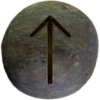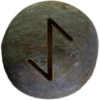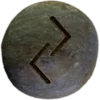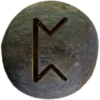Last Updated on December 22, 2024


The Viking shield wall, known as skjaldborg (pronounced “SKYALD-borg”), was a vital battlefield tactic. It involved warriors standing shoulder to shoulder, locking their shields to form a defensive barrier. This strategy provided protection against arrows and enemy attacks while allowing the Vikings to advance in unison. The term skjaldborg combines skjöld (shield) and borg (fortress), emphasizing its protective purpose.
The shield wall was not unique to the Vikings but played a central role in their warfare. It required discipline, unity, and trust among the warriors. Leaders typically commanded the formation, ensuring its effectiveness. A single failure to hold position could compromise the entire wall, leaving gaps for the enemy to exploit. Warriors carried round shields, often made of wood and reinforced with iron. These shields were lightweight yet sturdy, designed to absorb impacts and deflect blows.
In addition to defense, the shield wall allowed for coordinated offense. Warriors in the front would thrust their weapons through gaps between shields, striking at advancing foes. Rear ranks pushed forward, creating pressure that could break enemy lines. Viking sagas, including Heimskringla and The Saga of the Jomsvikings, describe battles, highlighting their importance in Norse culture.
The shield wall reflected not only martial skill but also the Vikings’ values of teamwork and loyalty. Warriors depended on one another to maintain the wall’s integrity, fostering a sense of shared purpose. This tactic also demonstrated strategic ingenuity, combining brute force with disciplined coordination. For the Vikings, the shield wall was both a practical tool and a symbol of unity and strength.
Two Elder Futhark Runes Associated with the Viking Shield Wall
![]() The rune Tiwaz (pronounced “TEE-wahz”), representing the god Týr, symbolizes honor, duty, and sacrifice in battle. The shield wall exemplified these traits, requiring warriors to defend their comrades and fight with unwavering resolve.
The rune Tiwaz (pronounced “TEE-wahz”), representing the god Týr, symbolizes honor, duty, and sacrifice in battle. The shield wall exemplified these traits, requiring warriors to defend their comrades and fight with unwavering resolve.
The rune Eihwaz (pronounced “AY-wahz”) represents resilience and defense. Its meaning aligns with the shield wall’s protective purpose and the steadfast strength needed to hold formation. Together, these runes reflect the shield wall’s martial and symbolic significance.
Importance to Asatruar
To Asatruar, the shield wall symbolizes unity, loyalty, and shared effort. It represents strength derived from collective action and mutual trust. The shield wall’s imagery inspires dedication to community and the courage to face challenges together. This ancient tactic reminds Asatruar of the enduring value of solidarity and the protection of one’s kin. By invoking the spirit of the shield wall, modern practitioners find lessons in resilience and shared responsibility.


